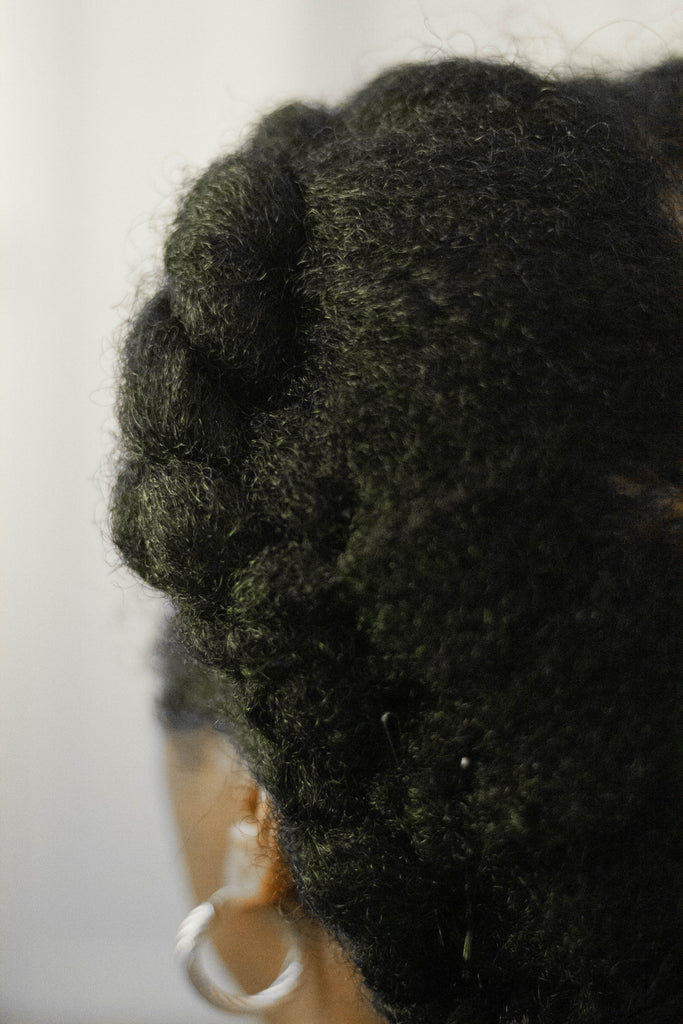What is the history of African American hair? Since it is Black History month, let's explore and embrace our roots. In early African civilizations, hairstyles could indicate a person's family background, tribe and social status. Black hair was seen as a symbol of a person's identity. There was a hairstyle for everyone and every occasion: whether you were royalty, a soldier going off to war, or a mother about to give birth. There was even a hairstyle for women waiting for their men to come back from war. "A person could tell who they were talking to simply by looking at the hairstyles," says Lori Tharps, a professor of journalism at Temple University and co-author of Hair Story: Untangling the Roots of Black Hair in America. "Your family, your tribe all had their own specific hairstyle. In addition, your hairstyle would be more elaborate if you held a higher place in society."

According to Tharps' research, there was never a time that a person didn't have their hair done in some kind of style, whether they were male or female. In fact, hair was so important that if a person didn't style their hair in a specific way, it was assumed that person was mentally ill.
When the transatlantic slave trade began, these traditions were erased, and the decades following it set the stage for much of the negative stereotyping around how Black people presented themselves, that still persists today. Even though slavery was abolished in 1865, many Black people felt pressured to fit in with mainstream white society and adjusted their hair accordingly.
Garret Augustus Morgan Sr. created the first chemical relaxer. Morgan found that the formula containing lye, a chemical straightener, successfully loosened curly textured hair and launched G.A. Morgan’s Hair Refiner in 1913. Black people felt compelled to smooth out their hair and texture to fit in easier, and to move through society better. Men and women had to go through really intensive methods to straighten their hair with a chemical relaxer, some called ‘hair crack’ that would almost burn their scalp. This process was harsh and, if not applied properly, could cause hair loss. Black people would go through this just so they could look more European and have silky straight hair.
In the 1900s, Madam C.J. Walker (born Sarah Breedlove) a Black businesswoman who struggled with hair loss, built an empire selling hair care products made for Black women. She popularized the press-and-curl style and is credited as being the first female self-made millionaire in U.S. history. Some criticized her for encouraging Black women to look white.
The afro hair style emerged in the 1960s, during the civil rights movement, and it was considered a symbol of rebellion, pride and empowerment. As Black people protested against racial segregation and oppression, the afro style caught everyone’s eye and took off. To many, it made the statement that I am not going to straighten my hair anymore. The Black afros that we associate with people like Angela Davis or the Black Panthers of the civil rights movement really became a symbol of resistance. In response to the racial politics of the time, the fist comb with a handle shaped like the black power salute, was designed in the 1970s.

The conversation around Black hair has now become politicized, as societal standards of what constitutes "normal" hairstyles continue to exclude Black people. This means that Black people, women and children, in particular, are being increasingly watched and punished for their hairstyles, whether through school regulations, office dress codes, or even rulebooks for competitive sports. The styles in question are bantu knots, braids, dreadlocks and even a basic afro.
Today in the U.S., the CROWN Act (Creating a Respectful and Open World for Natural Hair) has been inacted in 14 states, which prohibit racial discrimination on the basis of a person's hair and for the first time in American legal history, states are being forced to recognize that the kind of hair-based discrimination that Black people have been subjected to for years is a form racial discrimination.
With greater awareness around this issue, and new laws like the CROWN Act, more and more Black people are being empowered to show up to work and school as their most authentic selves.
Understanding our hair – not just the texture but the significance – often starts at a very young age, and is usually taught by parents, mostly mothers. We may all have different experiences, whether your hair was relaxed, braided or styled into kinky curls, the mother-daughter connection and hair education gained from these personal hair moments are important. The bonding it provided was priceless. Moms and daughters talked about what went on at school or simply watched TV together. The natural hair movement and the continued normalization of natural hair textures have affected many Black mothers. We have learned to accept ourselves fully and are able to teach our children and bond with them. To Black women, hair is so much more than just hair. It is inherently linked to identity, family, culture, ethnicity, creativity, expression and much, much more.
